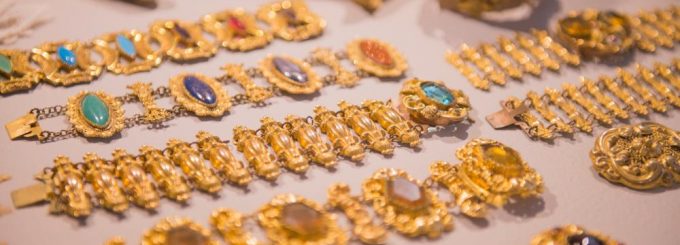Antique Jewelry Vs. Modern Jewelry: What’s The Difference And Which Is More Valuable?

When comparing antique jewelry vs. modern jewelry, it is important to understand the distinct characteristics and values of each. Antique jewelry, typically defined as being over 100 years old, carries historical significance and unique craftsmanship. On the other hand, modern jewelry is designed for today’s fashion trends and made using advanced technology.
Each type has its own advantages and appeals, depending on what the buyer values—be it historical rarity or contemporary style.
Definition and Age
Antique jewelry is generally considered to be at least 100 years old. Some pieces, such as Victorian or Art Deco jewelry, are particularly valued for their craftsmanship and age. Vintage jewelry, often confused with antique pieces, typically refers to jewelry that is 20 to 100 years old.
Meanwhile, modern jewelry includes pieces made within the last 20 years, utilizing current design trends and materials. While antique jewelry holds historical significance, modern pieces appeal to those who prefer contemporary designs and functionality.
Craftsmanship and Materials
Antique jewelry is often crafted by hand, showcasing intricate details and artistry. The materials used in antique pieces tend to be high-quality, such as high-carat gold and natural gemstones. The hand-crafted nature of these pieces means that no two are exactly alike and gives them a unique appeal. The skill and labor involved in creating each piece contribute to its rarity and value.
By contrast, modern jewelry is produced using advanced manufacturing techniques such as CAD (computer-aided design) and laser cutting. These methods allow for precision, consistency, and sometimes more complex designs.
Modern jewelry pieces often use a wider variety of materials, including platinum, titanium, and even non-traditional materials like ceramics or plastics. Designer brands like David Yurman jewelry and Cartier jewelry utilize these methods to create visually striking and durable pieces that meet contemporary tastes.
Design and Style
Antique jewelry is often marked by ornate, era-specific designs. The style of each period—such as Art Nouveau, Art Deco, or Victorian—reflects the cultural and artistic trends of the time.
These designs can range from intricate filigree work to bold geometric shapes. Collectors and enthusiasts often value these pieces for their craftsmanship and their connection to specific historical periods.
Modern jewelry tends to focus on minimalist, sleek, and versatile designs. With today’s emphasis on innovation and ethical sourcing, modern jewelry is crafted to reflect current fashion trends while offering practicality.
While antique jewelry may offer bold statements of the past, modern jewelry offers subtlety and adaptability. This makes it suitable for everyday wear and various occasions.
Durability
The durability of jewelry depends largely on the materials used and the methods of craftsmanship. Antique jewelry, if well-cared for, can last for generations. However, because of its age, some pieces may show signs of wear, and delicate settings may be more prone to damage.
Modern jewelry is designed with durability in mind, especially for everyday wear. It often features sturdier materials and more resilient designs. This makes it ideal for people who want jewelry that can withstand daily use.
Value Comparison
When it comes to monetary value, antique jewelry often has a higher value than modern pieces due to its rarity, craftsmanship, and historical significance. These items are usually considered good investments because they can appreciate in value over time, especially rare or unique pieces.
In contrast, modern jewelry tends to depreciate after purchase unless it becomes a highly sought-after designer item or collectible.
While modern jewelry often reflects current trends and personal taste, its value is usually more related to the materials and labor involved in its creation. Designer jewelry, such as pieces from brands like Cartier jewelry, can hold value, especially when it becomes iconic or collectible. However, it is not typically viewed as a long-term investment in the same way that antique pieces are.
How Coin Exchange Can Help You Make the Right Choice
Coin Exchange helps you assess and buy both antique and modern jewelry. Our team of experts can help you understand the value of each piece based on its craftsmanship, materials, and market trends. Are you looking for rare antique jewelry or modern designer pieces? We offer the knowledge and service you need to make an informed decision.
Ready to explore your options in jewelry? Visit Coin Exchange today and let us guide you through finding the perfect piece, whether antique or modern.
Contact us today for more information.


